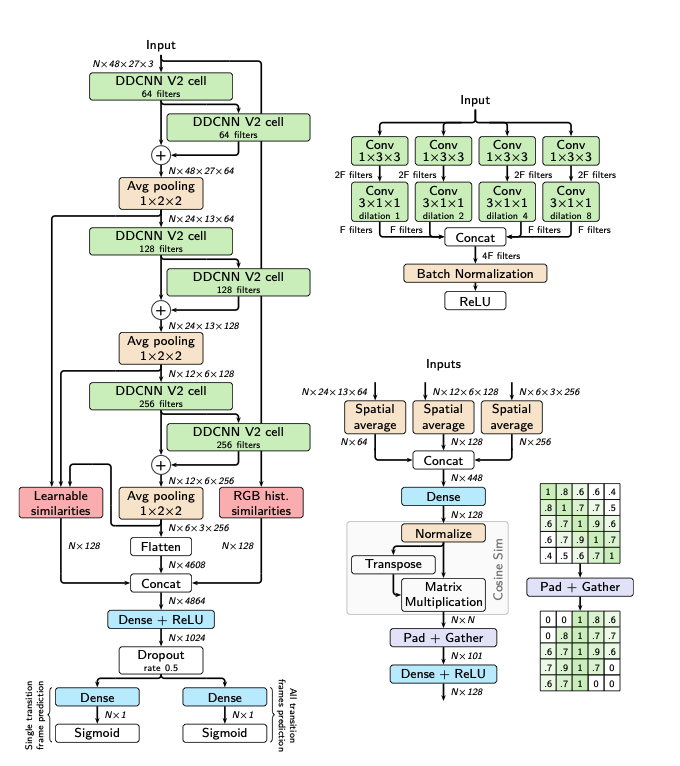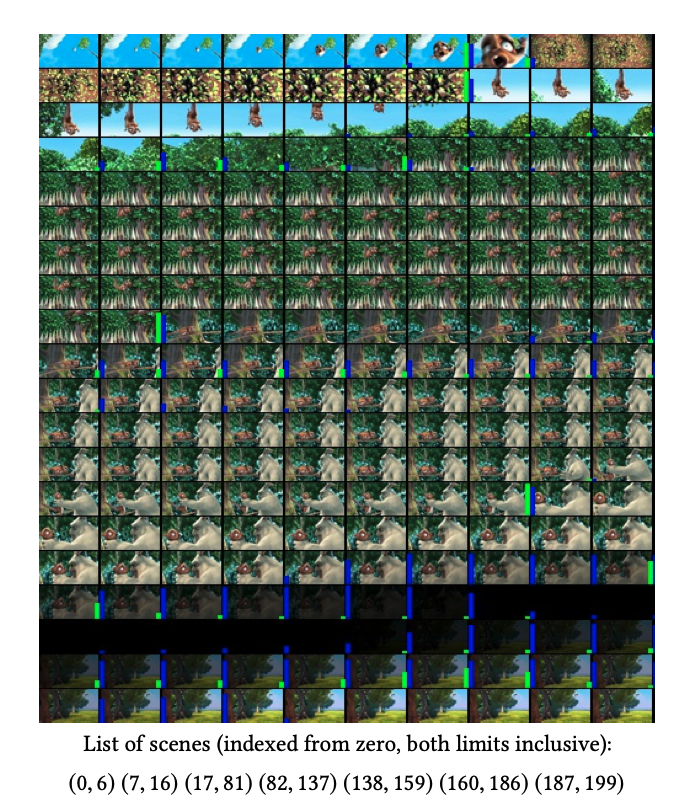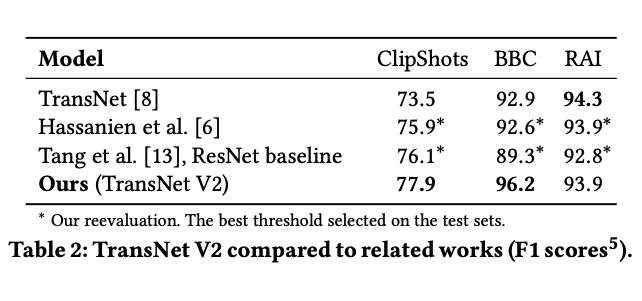1
2
3
4
5
6
7
8
9
10
11
12
13
14
15
16
17
18
19
20
21
22
23
24
25
26
27
28
29
30
31
32
33
34
35
36
37
38
39
40
41
42
43
44
45
46
47
48
49
50
51
52
53
54
55
56
57
58
59
60
61
62
63
64
65
66
67
68
69
70
71
72
73
74
75
76
77
78
79
80
81
82
83
84
85
86
87
88
89
90
91
92
93
94
95
96
97
98
99
100
101
102
103
104
105
106
107
108
109
110
111
112
113
114
115
116
117
118
119
120
121
122
123
124
125
126
127
128
129
130
131
132
133
134
135
136
137
138
139
140
141
142
143
144
145
146
147
148
149
150
151
152
153
154
155
156
157
158
159
160
161
162
163
164
165
166
167
168
169
170
171
172
173
174
175
176
177
178
179
180
181
182
183
184
185
186
187
188
189
190
191
192
193
194
195
196
197
198
199
200
201
202
203
204
205
206
207
208
209
210
211
212
213
214
215
216
217
218
219
220
221
222
223
224
225
226
227
228
229
230
231
232
233
234
235
236
237
238
239
240
241
242
243
244
245
246
247
248
249
250
251
252
253
254
255
256
257
258
259
260
261
262
263
264
265
266
267
268
269
270
271
272
273
274
275
276
277
278
279
280
281
282
283
284
285
286
287
288
289
290
291
292
293
294
295
296
297
298
299
300
301
302
303
304
305
306
307
308
309
310
311
312
313
314
315
316
317
318
319
320
321
322
323
324
325
326
327
328
329
330
331
332
333
334
335
336
337
338
339
340
341
342
343
344
345
346
347
348
349
350
351
352
353
354
355
356
357
358
359
360
361
362
363
364
365
366
367
368
369
370
371
372
373
374
375
376
377
378
379
380
381
382
383
384
385
386
387
388
389
390
391
392
393
394
395
396
397
398
399
400
401
402
403
404
405
406
407
408
409
410
411
412
413
414
415
416
417
418
419
420
421
422
423
424
425
426
427
428
429
| import os
import sys
import numpy as np
import tensorflow as tf
class TransNetV2:
def __init__(self, model_dir=None):
if model_dir is None:
model_dir = os.path.join(os.path.dirname(__file__), "transnetv2-weights/")
if not os.path.isdir(model_dir):
raise FileNotFoundError(f"[TransNetV2] ERROR: {model_dir} is not a directory.")
else:
print(f"[TransNetV2] Using weights from {model_dir}.")
self._input_size = (27, 48, 3)
try:
self._model = tf.saved_model.load(model_dir)
except OSError as exc:
raise IOError(f"[TransNetV2] It seems that files in {model_dir} are corrupted or missing. "
f"Re-download them manually and retry. For more info, see: "
f"https://github.com/soCzech/TransNetV2/issues/1#issuecomment-647357796") from exc
def predict_raw(self, frames: np.ndarray):
assert len(frames.shape) == 5 and frames.shape[2:] == self._input_size, \
"[TransNetV2] Input shape must be [batch, frames, height, width, 3]."
frames = tf.cast(frames, tf.float32)
logits, dict_ = self._model(frames)
single_frame_pred = tf.sigmoid(logits)
all_frames_pred = tf.sigmoid(dict_["many_hot"])
return single_frame_pred, all_frames_pred
def predict_frames(self, frames: np.ndarray):
assert len(frames.shape) == 4 and frames.shape[1:] == self._input_size, \
"[TransNetV2] Input shape must be [frames, height, width, 3]."
def input_iterator():
no_padded_frames_start = 25
no_padded_frames_end = 25 + 50 - (len(frames) % 50 if len(frames) % 50 != 0 else 50)
start_frame = np.expand_dims(frames[0], 0)
end_frame = np.expand_dims(frames[-1], 0)
padded_inputs = np.concatenate(
([start_frame] * no_padded_frames_start) + [frames] + ([end_frame] * no_padded_frames_end), 0
)
ptr = 0
while ptr + 100 <= len(padded_inputs):
out = padded_inputs[ptr:ptr + 100]
ptr += 50
yield out[np.newaxis]
predictions = []
processed_frames_count = 0
for inp in input_iterator():
single_frame_pred, all_frames_pred = self.predict_raw(inp)
predictions.append((single_frame_pred.numpy()[0, 25:75, 0],
all_frames_pred.numpy()[0, 25:75, 0]))
processed_frames_count = min(len(predictions) * 50, len(frames))
print("\r[TransNetV2] Processing video frames {}/{}".format(
processed_frames_count, len(frames)
), end="")
if len(frames) > 0:
print("")
single_frame_pred_list = [single_ for single_, all_ in predictions]
all_frames_pred_list = [all_ for single_, all_ in predictions]
if not single_frame_pred_list:
print(
f"[TransNetV2 WARNING] No predictions generated from input_iterator for a video of length {len(frames)}. Returning zeros.",
file=sys.stderr)
empty_preds_shape = (len(frames),)
if len(frames) == 0:
return np.array([]), np.array([])
return np.zeros(empty_preds_shape, dtype=np.float32), np.zeros(empty_preds_shape, dtype=np.float32)
single_frame_pred_concatenated = np.concatenate(single_frame_pred_list)
all_frames_pred_concatenated = np.concatenate(all_frames_pred_list)
return single_frame_pred_concatenated[:len(frames)], all_frames_pred_concatenated[
:len(frames)]
def predict_video(self, video_fn: str):
try:
import ffmpeg
except ModuleNotFoundError:
raise ModuleNotFoundError("For `predict_video` function `ffmpeg` needs to be installed in order to extract "
"individual frames from video file. Install `ffmpeg` command line tool and then "
"install python wrapper by `pip install ffmpeg-python`.")
print("[TransNetV2] Extracting frames from {}".format(video_fn))
video_stream, err = None, None
try:
process = (
ffmpeg
.input(video_fn)
.output("pipe:", format="rawvideo", pix_fmt="rgb24", s="48x27")
.run_async(pipe_stdout=True, pipe_stderr=True)
)
video_stream, err = process.communicate()
if process.returncode != 0:
print(
f"[TransNetV2 ERROR] ffmpeg process failed for {os.path.basename(video_fn)} with exit code {process.returncode}.",
file=sys.stderr)
if err:
print(f"[TransNetV2 ERROR] ffmpeg stderr:\n{err.decode(errors='ignore')}", file=sys.stderr)
return np.array([]), np.array([]), np.array([])
if err:
decoded_err = err.decode(errors='ignore').strip()
if decoded_err:
print(
f"[TransNetV2 WARNING] ffmpeg stderr for {os.path.basename(video_fn)} (exit code {process.returncode}):\n{decoded_err}",
file=sys.stderr)
if not video_stream:
print(
f"[TransNetV2 ERROR] ffmpeg produced no video stream for {os.path.basename(video_fn)}. Cannot proceed.",
file=sys.stderr)
return np.array([]), np.array([]), np.array([])
except ffmpeg.Error as e_ffmpeg:
print(f"[TransNetV2 ERROR] ffmpeg.Error during frame extraction for {os.path.basename(video_fn)}:",
file=sys.stderr)
if hasattr(e_ffmpeg, 'stderr') and e_ffmpeg.stderr:
print(e_ffmpeg.stderr.decode(errors='ignore'), file=sys.stderr)
else:
print(str(e_ffmpeg), file=sys.stderr)
return np.array([]), np.array([]), np.array([])
except Exception as e_generic_ffmpeg:
print(
f"[TransNetV2 ERROR] Generic exception during ffmpeg processing for {os.path.basename(video_fn)}: {e_generic_ffmpeg}",
file=sys.stderr)
return np.array([]), np.array([]), np.array([])
if video_stream is None:
print(f"[TransNetV2 ERROR] video_stream is None after ffmpeg processing for {os.path.basename(video_fn)}.",
file=sys.stderr)
return np.array([]), np.array([]), np.array([])
try:
video = np.frombuffer(video_stream, np.uint8).reshape([-1, 27, 48, 3])
except ValueError as e_reshape:
print(
f"[TransNetV2 ERROR] Failed to reshape video_stream for {os.path.basename(video_fn)}. Stream length: {len(video_stream)}. Error: {e_reshape}",
file=sys.stderr)
return np.array([]), np.array([]), np.array([])
if video.shape[0] == 0:
print(
f"[TransNetV2 ERROR] Extracted 0 frames from {os.path.basename(video_fn)} after ffmpeg. Cannot proceed.",
file=sys.stderr)
return np.array([]), np.array([]), np.array([])
return (video, *self.predict_frames(video))
@staticmethod
def predictions_to_scenes(predictions: np.ndarray, threshold: float = 0.5):
if predictions is None or predictions.size == 0:
print(
"[TransNetV2 DEBUG] predictions_to_scenes received empty or None predictions. Returning empty scenes.",
file=sys.stderr)
return np.array([], dtype=np.int32)
predictions = (predictions > threshold).astype(np.uint8)
scenes = []
t, t_prev, start = -1, 0, 0
for i, t_current_frame_pred in enumerate(predictions):
if t_prev == 1 and t_current_frame_pred == 0:
start = i
if t_prev == 0 and t_current_frame_pred == 1 and i != 0:
scenes.append([start, i])
t_prev = t_current_frame_pred
if t_prev == 0 and len(predictions) > 0:
if start < len(predictions):
scenes.append([start, len(predictions) - 1])
if not scenes and len(predictions) > 0:
print(
"[TransNetV2 DEBUG] No scenes detected by transition logic, assuming single scene for the entire video.",
file=sys.stderr)
return np.array([[0, len(predictions) - 1]], dtype=np.int32)
if not scenes and len(predictions) == 0:
print("[TransNetV2 DEBUG] No predictions, returning empty scenes array.", file=sys.stderr)
return np.array([], dtype=np.int32)
return np.array(scenes, dtype=np.int32)
@staticmethod
def visualize_predictions(frames: np.ndarray, predictions):
from PIL import Image, ImageDraw
if frames is None or frames.size == 0:
print("[TransNetV2 WARNING] visualize_predictions received no frames. Skipping visualization.",
file=sys.stderr)
return None
if isinstance(predictions, np.ndarray):
predictions = [predictions]
valid_predictions = []
for p_arr in predictions:
if p_arr is not None and p_arr.size > 0:
valid_predictions.append(p_arr)
if not valid_predictions:
print(
"[TransNetV2 WARNING] visualize_predictions received no valid prediction arrays. Skipping visualization.",
file=sys.stderr)
return None
predictions = valid_predictions
ih, iw, ic = frames.shape[1:]
width = 25
pad_with = width - len(frames) % width if len(frames) % width != 0 else 0
pad_with = max(0, pad_with)
if frames.size > 0:
frames = np.pad(frames, [(0, pad_with), (0, 1), (0, len(predictions)), (0, 0)])
else:
return None
predictions = [np.pad(x, (0, pad_with)) for x in predictions]
height = len(frames) // width
if height == 0 or width == 0:
print("[TransNetV2 WARNING] Cannot create visualization due to zero height or width after padding.",
file=sys.stderr)
return None
img = frames.reshape([height, width, ih + 1, iw + len(predictions), ic])
img = np.concatenate(np.split(
np.concatenate(np.split(img, height, axis=0), axis=2)[0], width, axis=1
), axis=2)[0, :-1]
img = Image.fromarray(img)
draw = ImageDraw.Draw(img)
for i, pred_tuple in enumerate(zip(*predictions)):
x_base, y_base = i % width, i // width
x_offset, y_offset = x_base * (iw + len(predictions)) + iw, y_base * (
ih + 1) + ih - 1
for j, p_value in enumerate(pred_tuple):
color = [0, 0, 0]
color[j % 3] = 255
value_scaled = round(p_value * (ih - 1))
if value_scaled != 0:
draw.line((x_offset + j, y_offset, x_offset + j, y_offset - value_scaled), fill=tuple(color),
width=1)
return img
def main():
import argparse
parser = argparse.ArgumentParser()
parser.add_argument("files", type=str, nargs="+", help="path to video files to process")
parser.add_argument("--weights", type=str, default=None,
help="path to TransNet V2 weights, tries to infer the location if not specified")
parser.add_argument('--visualize', action="store_true",
help="save a png file with prediction visualization for each extracted video")
args = parser.parse_args()
try:
model = TransNetV2(args.weights)
except Exception as e_model_load:
print(f"[TransNetV2 CRITICAL] Failed to load TransNetV2 model: {e_model_load}", file=sys.stderr)
sys.exit(1)
for file in args.files:
print(f"[TransNetV2 INFO] Processing file: {file}", file=sys.stderr)
if os.path.exists(file + ".predictions.txt") or os.path.exists(file + ".scenes.txt"):
print(f"[TransNetV2] {file}.predictions.txt or {file}.scenes.txt already exists. "
f"Skipping video {file}.", file=sys.stderr)
continue
try:
video_frames, single_frame_predictions, all_frame_predictions = \
model.predict_video(file)
if video_frames is None or video_frames.size == 0:
print(
f"[TransNetV2 ERROR] predict_video returned no frames for {os.path.basename(file)}. Cannot save outputs.",
file=sys.stderr)
continue
if single_frame_predictions is None or single_frame_predictions.size == 0:
print(
f"[TransNetV2 ERROR] predict_video returned no single_frame_predictions for {os.path.basename(file)}. Cannot save outputs.",
file=sys.stderr)
continue
print(f"[TransNetV2 DEBUG] Returned from predict_video for {os.path.basename(file)}.", file=sys.stderr)
print(f"[TransNetV2 DEBUG] video_frames shape: {video_frames.shape}", file=sys.stderr)
print(f"[TransNetV2 DEBUG] single_frame_predictions shape: {single_frame_predictions.shape}",
file=sys.stderr)
print(f"[TransNetV2 DEBUG] all_frame_predictions shape: {all_frame_predictions.shape}", file=sys.stderr)
predictions = np.stack([single_frame_predictions, all_frame_predictions], 1)
predictions_filepath = file + ".predictions.txt"
try:
np.savetxt(predictions_filepath, predictions, fmt="%.6f")
print(f"[TransNetV2 DEBUG] Attempted to save predictions to {predictions_filepath}", file=sys.stderr)
if not os.path.exists(predictions_filepath):
print(
f"[TransNetV2 CRITICAL DEBUG] Saved predictions but file {predictions_filepath} does NOT exist!",
file=sys.stderr)
else:
print(f"[TransNetV2 DEBUG] File {predictions_filepath} successfully created.", file=sys.stderr)
except Exception as e_pred_save:
print(f"[TransNetV2 ERROR] Exception saving predictions file {predictions_filepath}: {e_pred_save}",
file=sys.stderr)
continue
scenes = model.predictions_to_scenes(single_frame_predictions)
print(
f"[TransNetV2 DEBUG] Scenes array for {os.path.basename(file)} (shape: {scenes.shape if scenes is not None else 'None'}):\n{scenes}",
file=sys.stderr)
if scenes is None or scenes.size == 0:
print(f"[TransNetV2 WARNING] Scenes array is empty or None for {os.path.basename(file)}. "
f"No .scenes.txt will be saved, or it might be empty.", file=sys.stderr)
scenes_filepath = file + ".scenes.txt"
try:
np.savetxt(scenes_filepath, scenes, fmt="%d")
print(f"[TransNetV2 DEBUG] Attempted to save scenes to {scenes_filepath}", file=sys.stderr)
if os.path.exists(scenes_filepath):
print(f"[TransNetV2 DEBUG] File {scenes_filepath} successfully created.", file=sys.stderr)
if scenes is not None and scenes.size == 0 and os.path.getsize(scenes_filepath) == 0:
print(f"[TransNetV2 DEBUG] {scenes_filepath} is empty as expected for empty scenes array.",
file=sys.stderr)
elif scenes is not None and scenes.size > 0 and os.path.getsize(scenes_filepath) == 0:
print(
f"[TransNetV2 WARNING] {scenes_filepath} is unexpectedly empty despite non-empty scenes array.",
file=sys.stderr)
else:
print(
f"[TransNetV2 CRITICAL DEBUG] Saved scenes but file {scenes_filepath} does NOT exist afterwards!",
file=sys.stderr)
except Exception as e_save:
print(f"[TransNetV2 ERROR] Exception during np.savetxt for .scenes.txt ({scenes_filepath}): {e_save}",
file=sys.stderr)
continue
if args.visualize:
vis_filepath = file + ".vis.png"
if os.path.exists(vis_filepath):
print(f"[TransNetV2] {vis_filepath} already exists. "
f"Skipping visualization of video {file}.", file=sys.stderr)
else:
print(f"[TransNetV2 DEBUG] Attempting to visualize predictions for {os.path.basename(file)}",
file=sys.stderr)
pil_image = model.visualize_predictions(
video_frames, predictions=(single_frame_predictions, all_frame_predictions))
if pil_image:
try:
pil_image.save(vis_filepath)
print(f"[TransNetV2 DEBUG] Saved visualization to {vis_filepath}", file=sys.stderr)
except Exception as e_vis_save:
print(f"[TransNetV2 ERROR] Exception saving visualization {vis_filepath}: {e_vis_save}",
file=sys.stderr)
else:
print(f"[TransNetV2 WARNING] Visualization not generated for {os.path.basename(file)}.",
file=sys.stderr)
except Exception as e_video_processing:
print(f"[TransNetV2 ERROR] Unhandled exception during processing of video {file}: {e_video_processing}",
file=sys.stderr)
print("[TransNetV2 INFO] Finished processing all files.", file=sys.stderr)
if __name__ == "__main__":
main()
|






